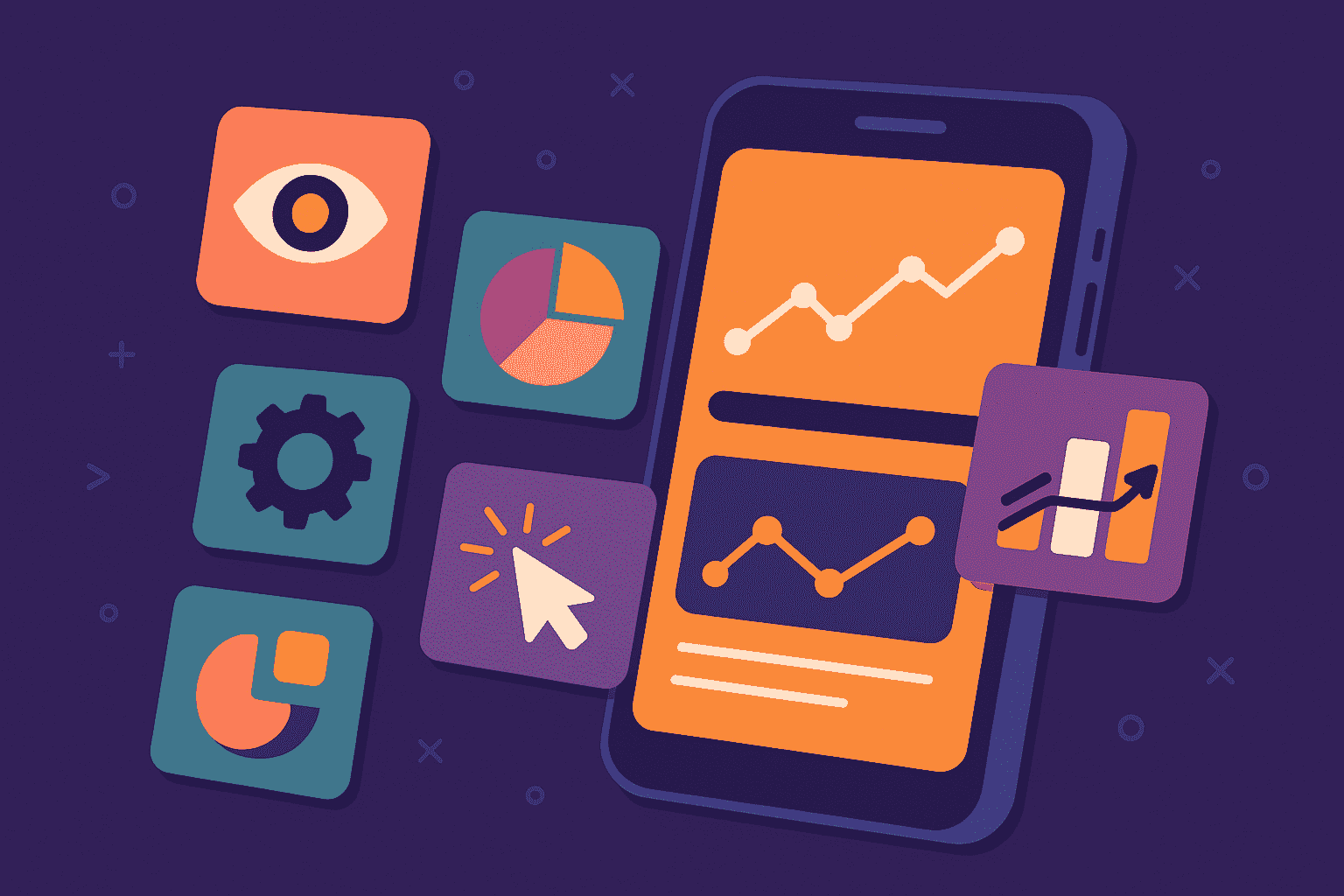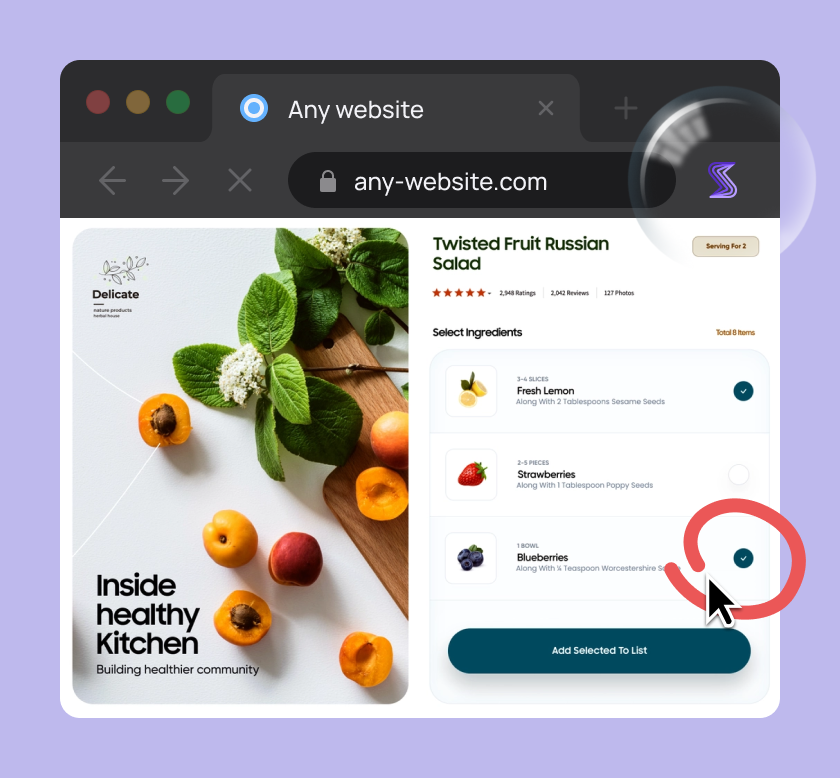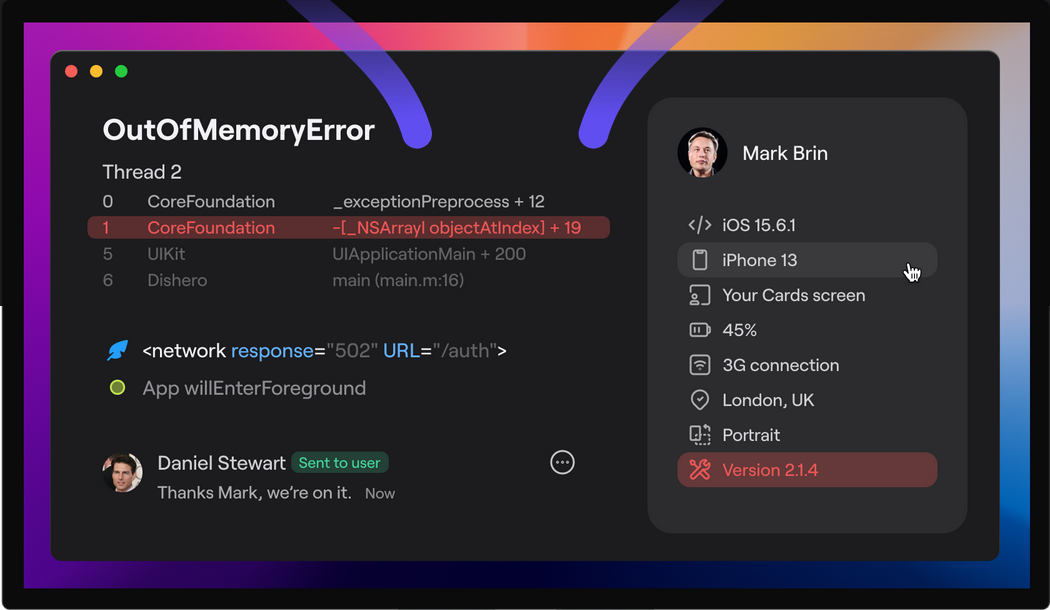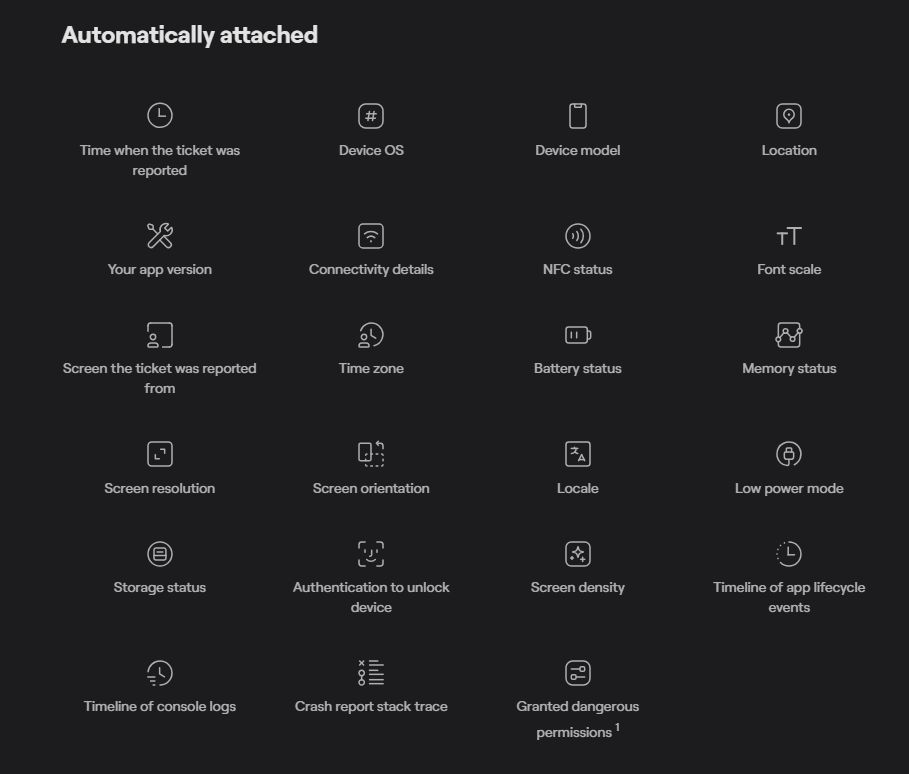
Key Takeaways:
- Spotify, Netflix, and DoorDash rely on release management to boost user experience.
- With the right tools, companies can eliminate repetitive tasks and human error.
- Release management helps companies quickly respond to changing market demands.
Did you know that 60% of users will delete an app if it crashes unexpectedly?
That’s right, today’s users have little patience for bugs or slow performance.
They expect seamless experiences and rapid updates.
That’s why top brands like Spotify, Netflix, and DoorDash rely on smart, efficient app release management.
It helps them roll out updates quickly, maintain smooth performance, and keep users satisfied.
Keep reading to learn what app release management is, why it matters, and which tools can help you do it better.
Table of Contents
What is app release management?
App release management is essential for delivering software efficiently, reliably, and with minimal risk.
It’s a complex process that covers everything from planning and development to deployment, release, and ongoing maintenance.
Here’s a quick breakdown of its typical phases:
| Planning | Defining the project scope, objectives, and requirements |
| Design | Creating the software architecture and design specifications |
| Development | Writing code based on the design |
| Testing | Ensuring the software meets quality standards and functions as intended |
| Deployment | Moving code to the production environment without releasing it to users |
| Testing in production | Validating code in the live environment with a limited audience |
| Release | Gradually rolling out updates to all users through progressive delivery strategies |
| Maintenance | Monitoring performance, providing support, and adjusting features using tools like feature flags |
Many companies follow this structured approach, no matter their industry or size.
Take Spotify, for example.

Get unreal data to fix real issues in your app & web.
With each weekly release of their mobile app for iOS and Android, they deliver hundreds of changes to over 675 million users across a vast range of devices.
Naturally, a meticulous release process is non-negotiable if they want to maintain an uninterrupted listening experience for their users.
Below, you can see Spotify’s typical release timeline.

The person in charge of this whole process is the Release Manager, who handles communication and coordination with feature teams and other stakeholders.
According to Spotify’s website, this structure helps them consistently deliver value to users:
In short, app release management helps Spotify strike that delicate balance between speed and quality.
It keeps them agile, efficient, and ready to meet their users’ expectations, every time.
The objectives of app release management
Let’s explore why app release management is so essential in more detail.
Increasing deployment efficiency
App release management streamlines deployment processes across teams, aligning the right resources and timelines to ensure each release is smooth, timely, and well-coordinated.
Think of it as project management, but purpose-built for the software development lifecycle.
One organization that witnessed significant efficiency gains from structured release management is Neo, a financial technology company based in Canada.
In late 2021, they realized that inconsistent release cycles and inefficient, manual processes were significantly slowing them down.
To fix this, they built a structured, automated, and scalable release pipeline.
As a result, they were able to:
- Eliminate much of the manual overhead
- Let developers focus on high-impact tasks
- Cut build times in half
- Increase the frequency of feature releases and app updates to a weekly cadence
In short, better release management helped Neo deliver more value to users, faster, and without compromising quality.
Sudeep Sidhu, Lead Mobile Developer at Neo at the time, explained why this is so important for the company:
At the end of the day, the deployment efficiency that Neo unlocked is what enables organizations to stay agile and flexible.
It allows them to quickly respond to market demands and continually meet changing user needs, ultimately placing them ahead of the competition in their respective markets.
Improving user experience
Efficient app release management is all about delivering value without disruption.
It involves continuous monitoring to quickly identify and resolve any performance issues, only releasing features once they are fully tested and refined.
This ultimately results in a bug-free experience that significantly increases user satisfaction, engagement, and long-term loyalty.
In fact, a 2023 Embrace survey confirms that user experience is directly tied to a person’s willingness to continue using an app.
As it turns out, 60% of users say they would uninstall an app after it crashes.
But it’s not just crashes that drive users away.
Problems like unresponsive buttons, app freezing, slow startup times, or difficulty completing forms can be equally damaging.
The purpose of effective app release management is to prevent these issues proactively.
DoorDash is a great example of a company that prioritizes user experience through strategic and thorough release management.
Their app undergoes rigorous testing and constant audits throughout its lifecycle.
Even after release, they stay vigilant, as noted on their website:
Each team owns specific key metrics and monitors them closely, making them well-positioned to detect and address problems in their respective components.
Meanwhile, release managers monitor crash rates and trending issues, ensuring nothing slips through the cracks.
With such attention to detail, DoorDash can maintain a weekly release cadence across multiple apps, delivering updates on schedule, upholding high quality, and keeping users happy.
Minimizing risk
Release management ensures that all important steps, such as testing, audits, and rollback plans, are in place to mitigate unforeseen issues during deployment.
This helps prevent risks such as noncompliance, service outages, and data loss—issues that can seriously harm a business and erode user trust.
For example, Netflix uses canary release to manage risks.
This method minimizes the risk of releasing new software by initially rolling it out to a small subset of users (the “canary”), while the majority continue using the stable version.
Traffic is split between the two groups, and if issues arise in the canary version, it can be quickly rolled back with minimal impact.
Users barely notice a thing.
You can see the illustration of their process below:

Of course, canary deployment is just one of many methods for minimizing risk during software releases.
Regardless of the specific tactic you decide to use, the goal stays the same:
Minimize disruptions, ensure compliance, and keep everything running smoothly for both your teams and end-users.
Tools for effective release management
All the companies with successful release management we’ve mentioned have one thing in common: they’ve implemented tools that streamline and improve their app release workflows.
Let’s look at the types of tools commonly used—so you can follow their lead and become a success story, too.
Version control tools
Version control tools help teams track and manage changes to source code over time, maintaining a detailed history of modifications, additions, and deletions.
Key features typically include:
| Branching and merging | Support for parallel development through multiple branches, with seamless merging capabilities |
| Conflict resolution | Built-in tools to efficiently resolve code conflicts |
| Access control | Granular permission settings to define who can read from or write to the codebase |
| Continuous integration support | Compatibility with CI/CD pipelines, build tools, and integrated development environments (IDEs) |
When it comes to app release management, version control solutions are quite helpful—if not downright essential.
Whether your team is ten people in one office or a hundred spread across time zones, these tools keep everyone in sync and moving forward.
Take Git, for example.
This is a free and open-source distributed version control system built to handle projects of any size with speed and efficiency.

One of Git’s greatest strengths is its distributed architecture.
Instead of doing a “checkout” of the current tip of the source code, you do a “clone” of the entire repository.
This means that each user has a complete copy of the project’s history.
Even in centralized workflows, these local copies act as full backups of the main server.
If the server goes down, any of these clones can restore it, eliminating a single point of failure unless only one copy exists.
Bottom line is this: Version control systems like Git are vital in modern app release management.
They provide structure, facilitate collaboration, and ensure code quality, making the development process far more resilient and reliable.

Capture, Annotate & Share in Seconds with our Free Chrome Extension!
CI/CD tools
Continuous Integration and Continuous Deployment (CI/CD) tools automate, streamline, and secure the process of building, testing, and releasing software.
Here are some of their key features:
| Pipeline automation | Create, manage, and trigger build and deployment workflows |
| Rollback mechanisms | Automatically revert deployments in case of failures |
| Testing integration | Support for automated testing frameworks to ensure code quality |
| Scalability | Handle large volumes of parallel builds and deployments efficiently |
Essentially, these tools enable developers to release higher-quality, more stable products.
They allow teams to regularly integrate code changes into a shared repository, test those changes automatically, and deploy them to production with minimal manual intervention.
One such solution is CircleCI.
It offers all the essential CI/CD features, allowing you to build, test, and deploy using intelligent automation.
At the heart of CircleCI are pipelines, which are used to coordinate every part of the CI/CD process.
Pipelines provide a flexible framework for creating conditional workflows based on filters or job requirements, making it easy to customize the CI/CD process to your project’s needs.
All your pipelines are displayed in a dashboard, like the one shown below.

You can view recently triggered pipelines for your organization and use filters to find the pipelines you need.
On the right side of the screen, quick controls let you rerun or cancel workflows as needed.
The key takeaway?
Teams that aim to deliver more value in less time rely on CI/CD tools.
They improve the quality of the code and introduce the consistency and repeatability required to release products efficiently, every single time.
Release orchestration tools
Release orchestration tools are the central hub for planning, automating, and monitoring the entire release lifecycle.
They help you ensure that releases are always executed efficiently, with minimal risk.
Typically, these tools offer:
| Centralized dashboard | A unified view of release schedules, progress, and status across teams |
| Dependency management | Tools to track and manage interdependencies between teams and components |
| Environment provisioning | Automated setup and configuration of testing and deployment environments |
| Compliance and auditing | Features that support documentation and regulatory compliance tracking |
Release orchestration solutions are broader in scope than the others we’ve covered.
They focus on managing the entire release process across teams, environments, and tools, with the ultimate goal of delivering the right features to the right users at the right time.
Take Plutora, for example.
It allows you to easily create releases using templates or predefined types, and then efficiently manage and track the release cycle and deployment processes.
You get a complete picture of the release, including its progress, status, quality, automation, and overall health, all presented in an intuitive dashboard:

For instance, you can oversee activities, criteria, and overdue tasks, or track scope items to spot potential risks and keep the release on schedule.
In short, tools like Plutora offer a 360-degree view of your release lifecycle, offering unparalleled control without the need for endless spreadsheets and outdated legacy systems.
Bug and crash reporting tools
Bug and crash reporting tools, as the name suggests, are designed to capture, track, and provide insights into errors, crashes, and user-reported bugs.
They can be used in both pre-release and post-release environments.
Here are some key features to look for:
- Integration with third-party tools
- Actionable bug data
- Ticket management
- Live chat support
- Activity history
- App analytics
These tools give your team real-time visibility into app issues users experience, enabling faster diagnosis, resolution, and improved app stability across releases.
Take Shake, for example.
Shake is our own bug and crash reporting tool that goes far beyond basic error messages and provides a complete breakdown of what led to a crash.

One of the most critical elements is the stack trace, which pinpoints the exact location in the code where the crash occurred.
Shake also automatically logs:
- Error types
- Device and OS versions
- Crash frequency
What truly sets Shake apart is the rich context it captures.
You get insights into user interactions leading up to the issue, including taps, network activity, device state, and other crucial data points:

There are even automatic video recordings and screenshots, showing exactly what the user was doing before the bug occurred.
This rich context is invaluable because crashes rarely happen in a vacuum.
They’re the result of a chain of events, and Shake helps you rewind the tape and watch it all unfold.
The best part?
Thanks to such rich and actionable data, Shake can be used across various stages of the release lifecycle.
Use it during internal testing, dogfooding, beta testing, or even in tech support scenarios, and make sure that every release of your product is as polished and stable as possible.
Conclusion
In a time when users choose to abandon an app after just one crash, app release management has become an absolute must.
Luckily, it’s never been easier to get it right.
With so many different tools available, you can finally move away from firefighting mode and start responding to user needs in real time.
It’s time to say goodbye to cumbersome, manual processes and take control of your entire release lifecycle once and for all.
Many companies are already doing this.
Are you ready to join them?









